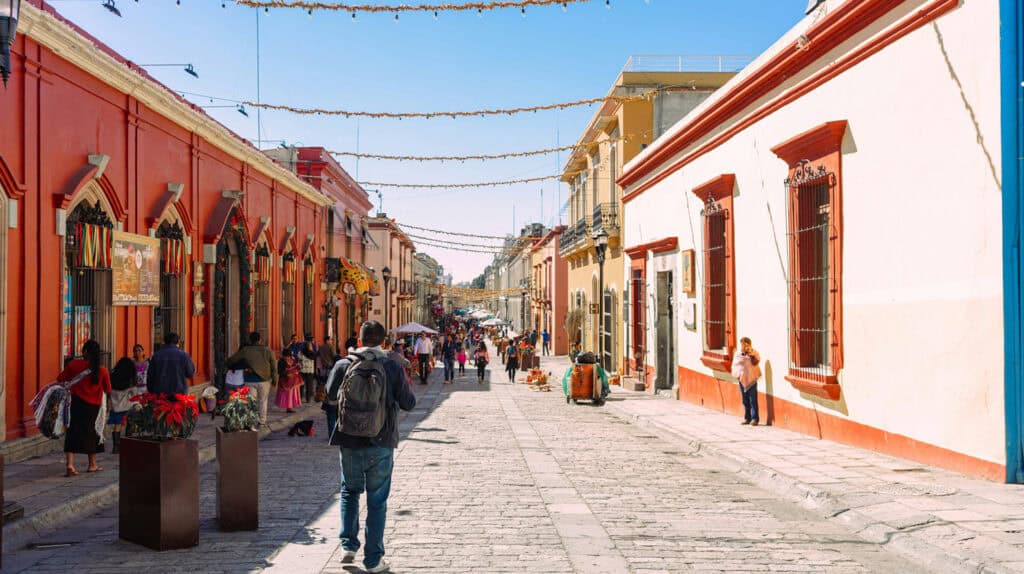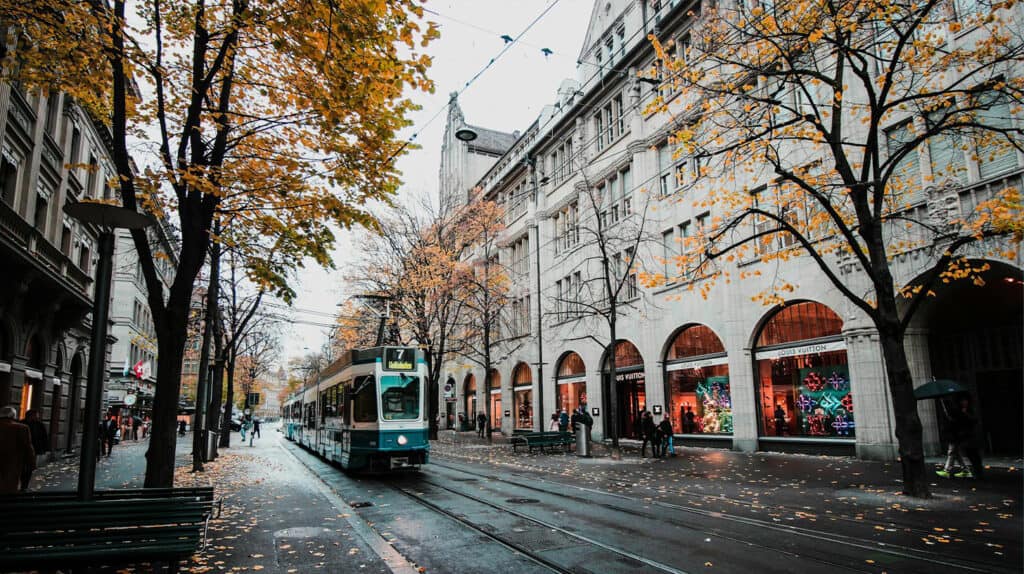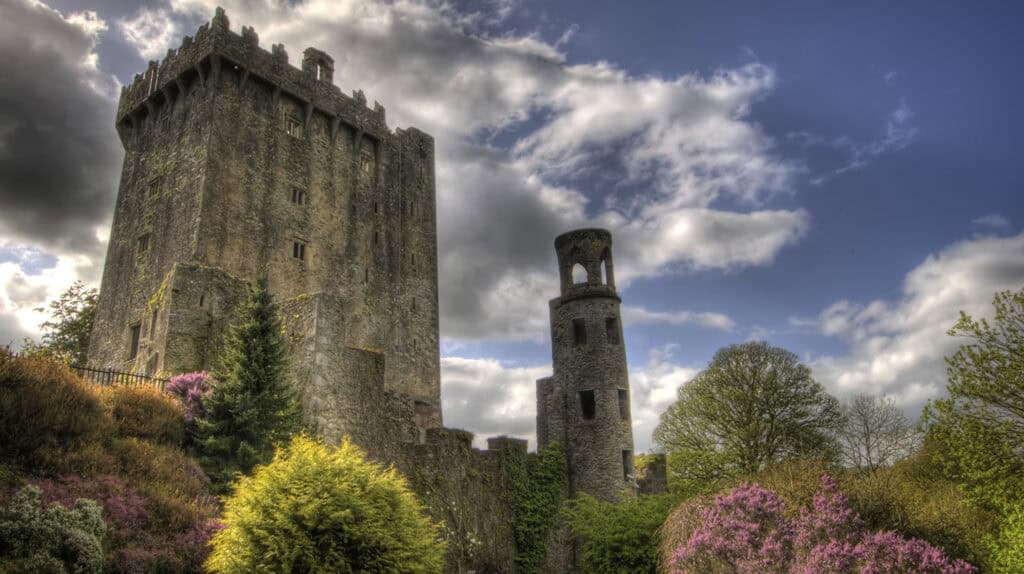
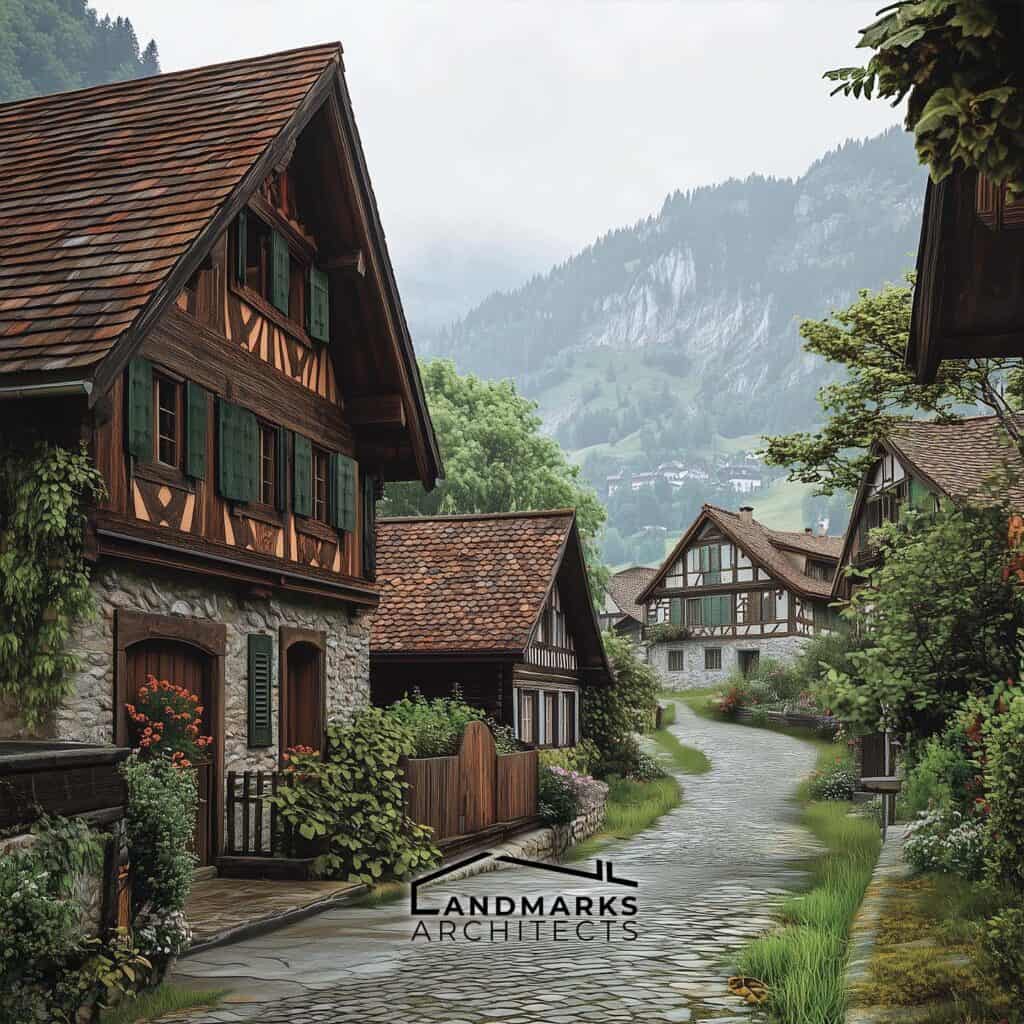

Fascinated by traditional Swiss architecture? This architectural style, with its rich history and unique regional influences, is a testament to Switzerland’s diverse cultural heritage and natural beauty.
As an architecture enthusiast or traveler, you appreciate the intricate designs and historical significance of Swiss buildings. Navigating through these architectural wonders might seem daunting, but you’re not alone.
At Landmark Architects, we’re here to guide you through the fascinating world of Swiss architecture. With our expert insights, you’ll explore the key styles that define this unique tradition.
In this article, we’ll cover:
- Swiss Chalet Style: Distinctive features and cultural significance.
- Vernacular Architecture: Regional adaptations and sustainability.
- Gothic and Romanesque Styles: Iconic religious and secular buildings.
- Baroque Architecture: Ornate designs and historical influences.
- Modern Influences: Blending tradition with contemporary innovation.
Ready to explore the architectural heritage of Switzerland? Keep reading to uncover the remarkable styles and influences that shape Swiss architecture today.
Historical Evolution of Swiss Architecture

Traditional Swiss architecture reflects a blend of diverse regional styles, shaped by the country’s rich history and cultural heritage. Key styles include the distinctive Swiss chalet and various ecclesiastical designs, showcasing the durability and aesthetics of local building materials.
1. Swiss Chalet Style

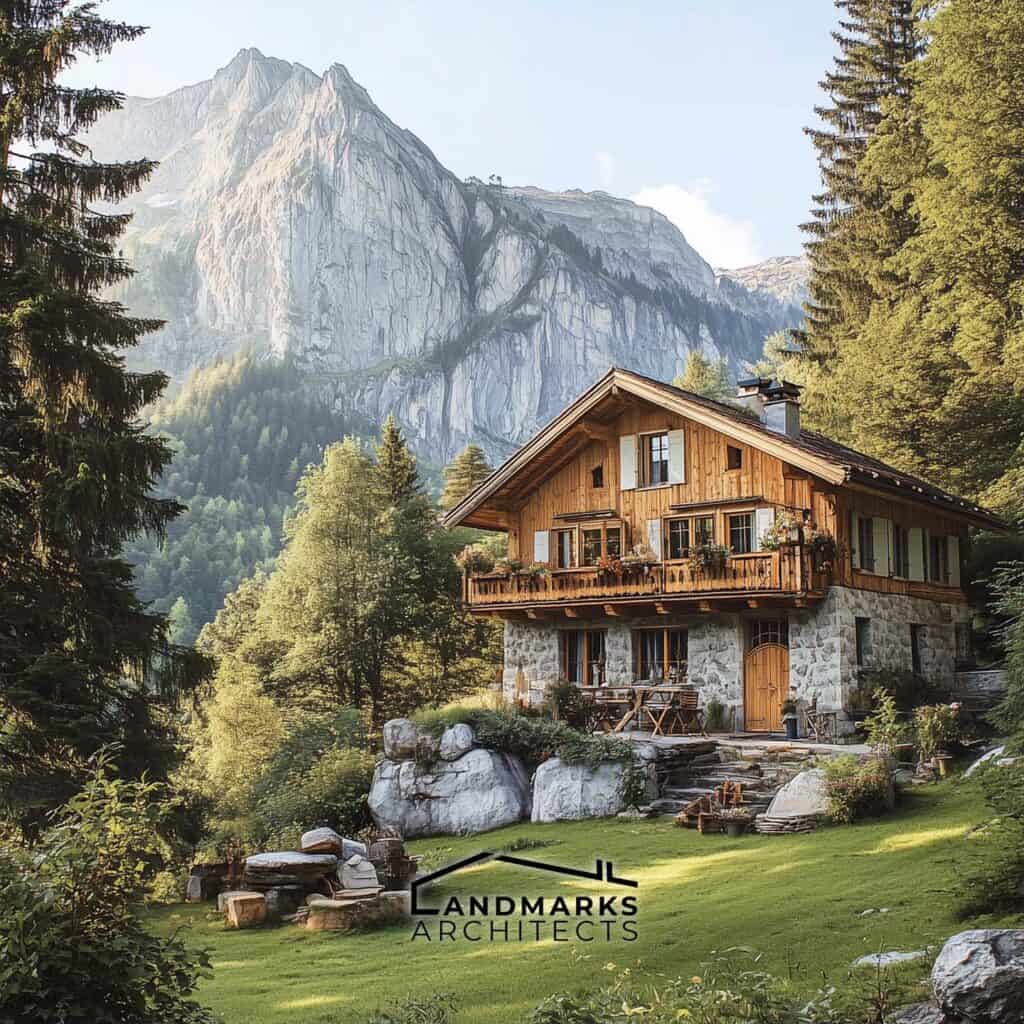
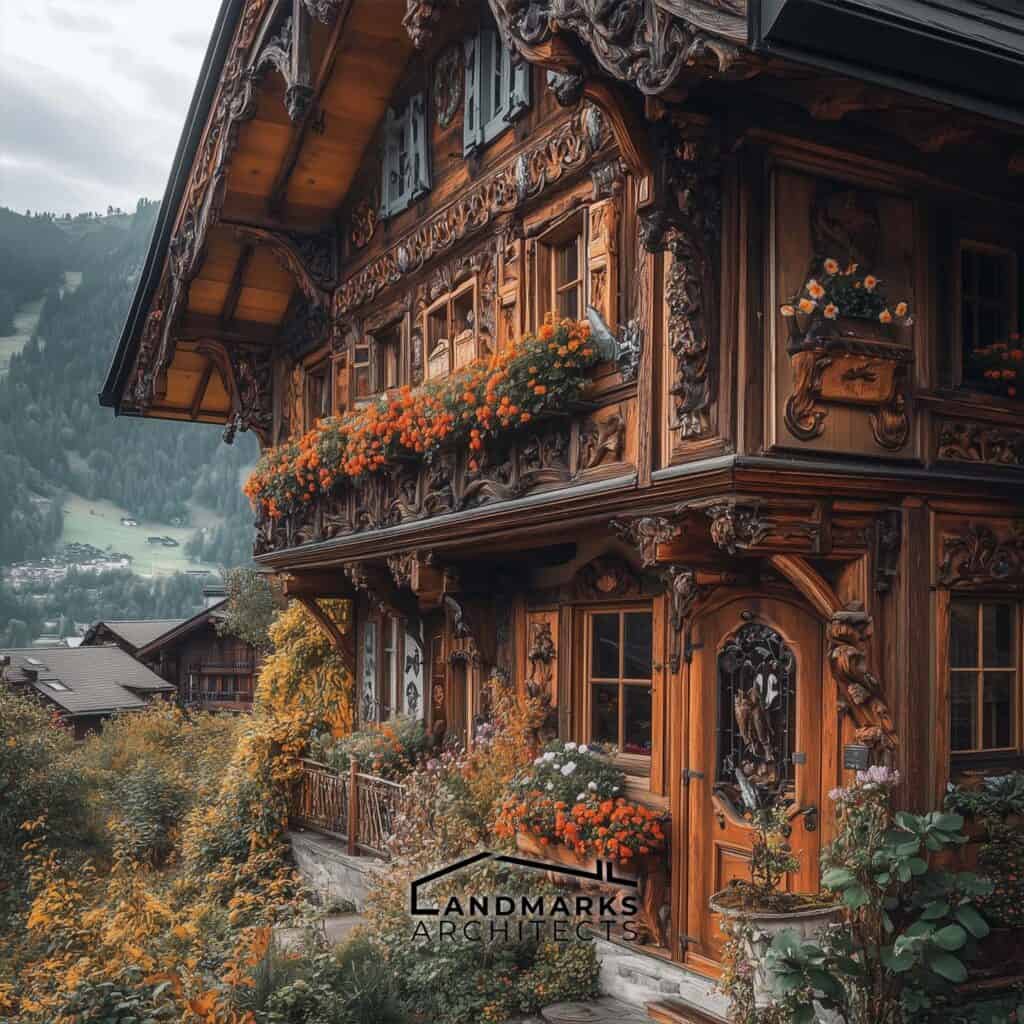
The Swiss chalet style, synonymous with the alpine regions, is both picturesque and practical. Renowned for its distinctive architectural features, it is designed to withstand the challenges of the alpine environment. Key characteristics include:
- Widely Projecting Roofs: Chalets are equipped with steep, overhanging roofs and wide eaves to manage heavy snowfall and protect the building from the elements.
- Wooden Construction: Traditional Swiss chalets are primarily constructed from wood, often incorporating local stone, blending seamlessly with the natural landscape.
- Decorative Elements: Features intricate wooden carvings and vibrant floral window boxes, adding a touch of artistry and charm.
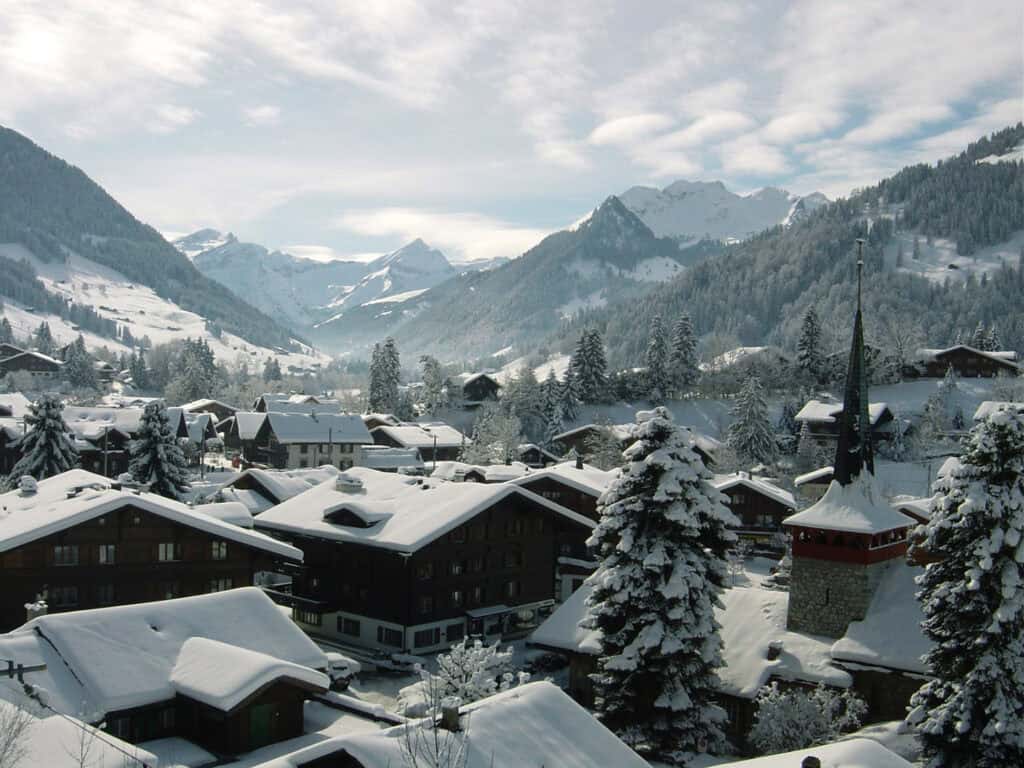
A notable example of this style is the Chalet at Gstaad, a popular tourist destination that exemplifies the traditional Swiss chalet. Beyond their practical design, these chalets symbolize a strong sense of community and cultural heritage.
See Also Famous Buildings in Switzerland
2. Vernacular Architecture
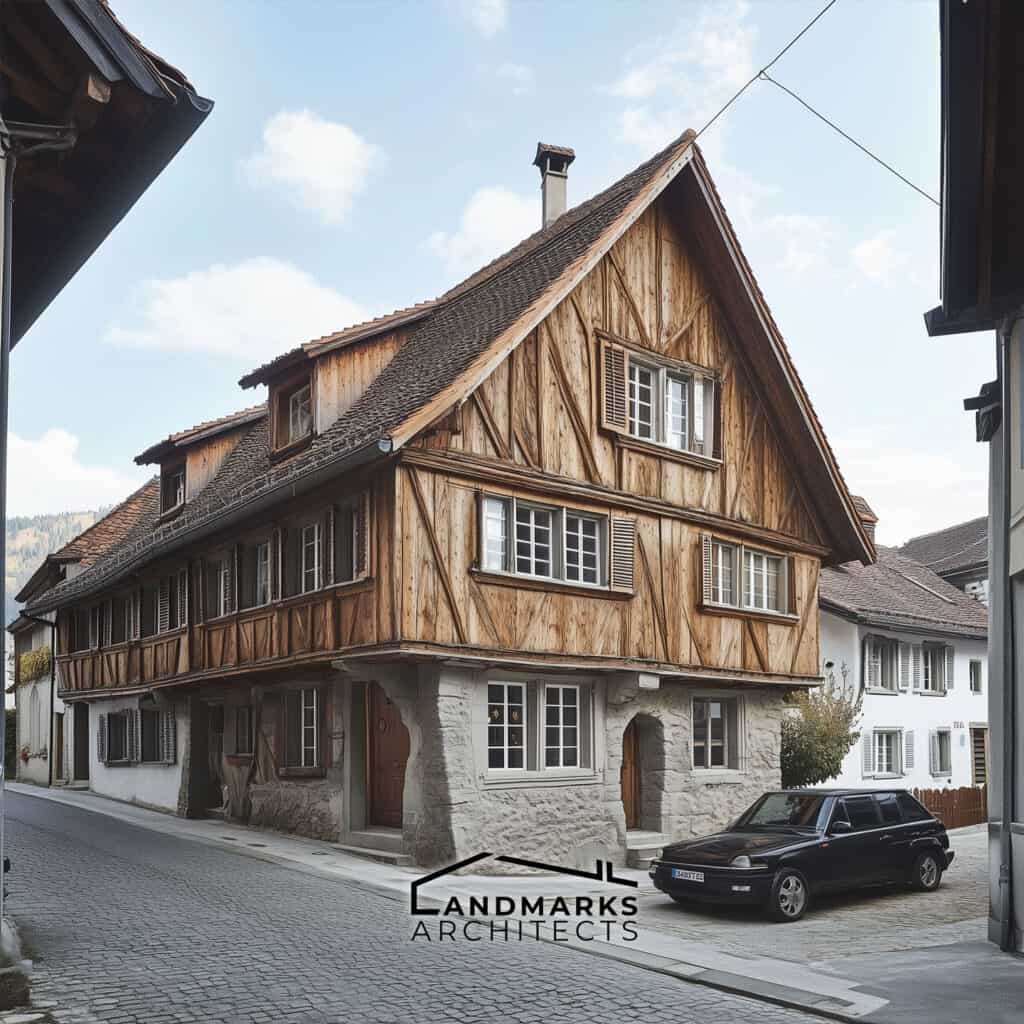
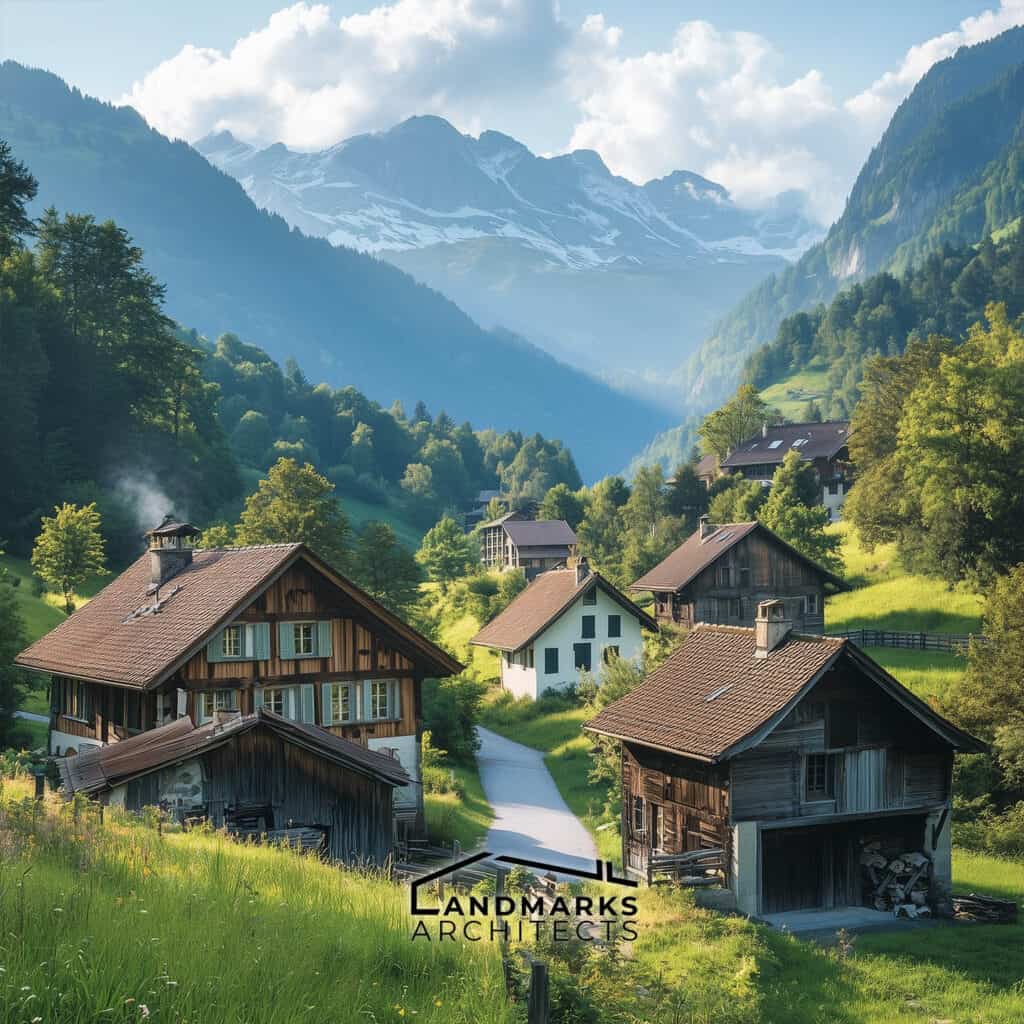
Vernacular architecture in Switzerland showcases regional adaptations to local materials and environmental conditions. Key characteristics include:
- Local Materials: Utilizes materials like wood and stone sourced from the immediate environment.
- Adaptive Design: Tailored to the local climate and landscape, such as the steep roofs of Appenzell houses.
- Functionality: Emphasizes practicality with features like large windows for natural light.
- Sustainability: These homes prioritize sustainability and harmony with nature.
These homes illustrate a deep connection to the landscape and cultural identity, showcasing traditional designs that prioritize sustainability and harmony with nature.
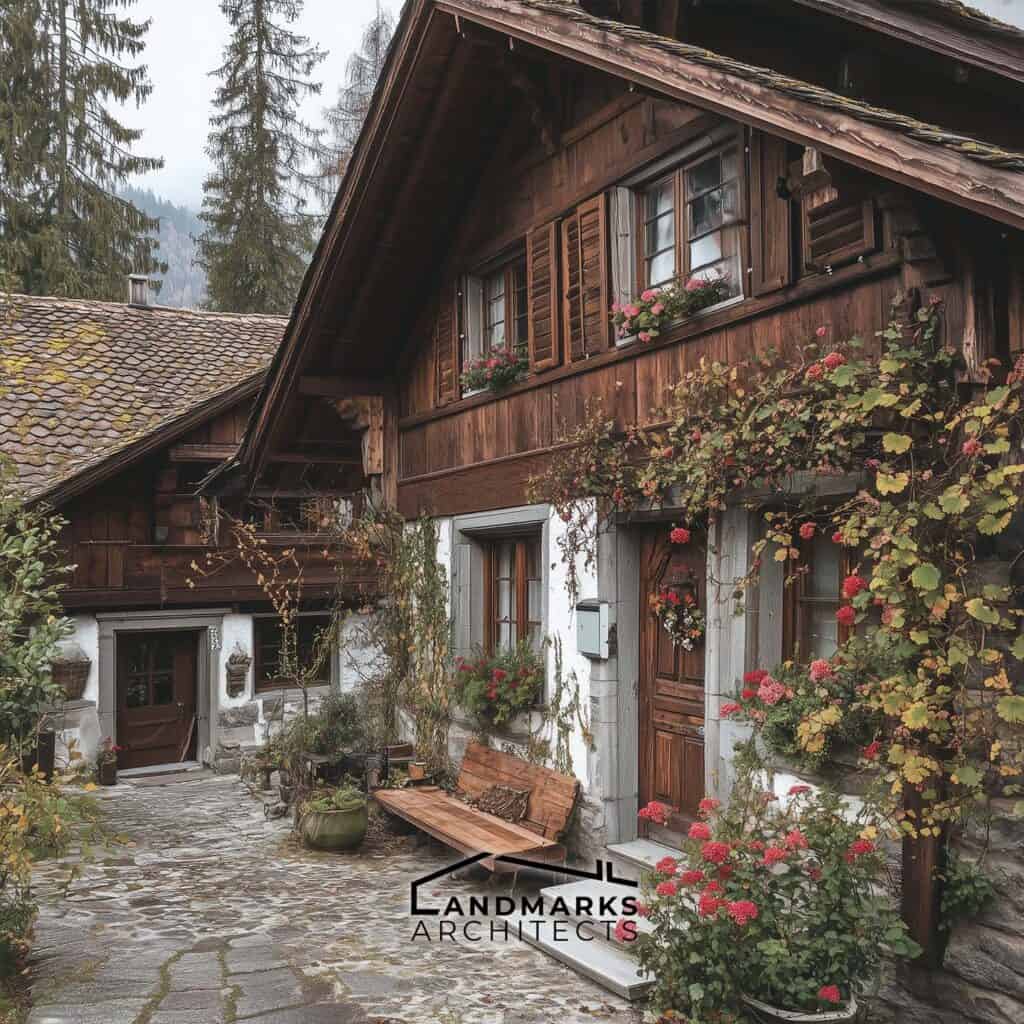
3. Gothic Architecture
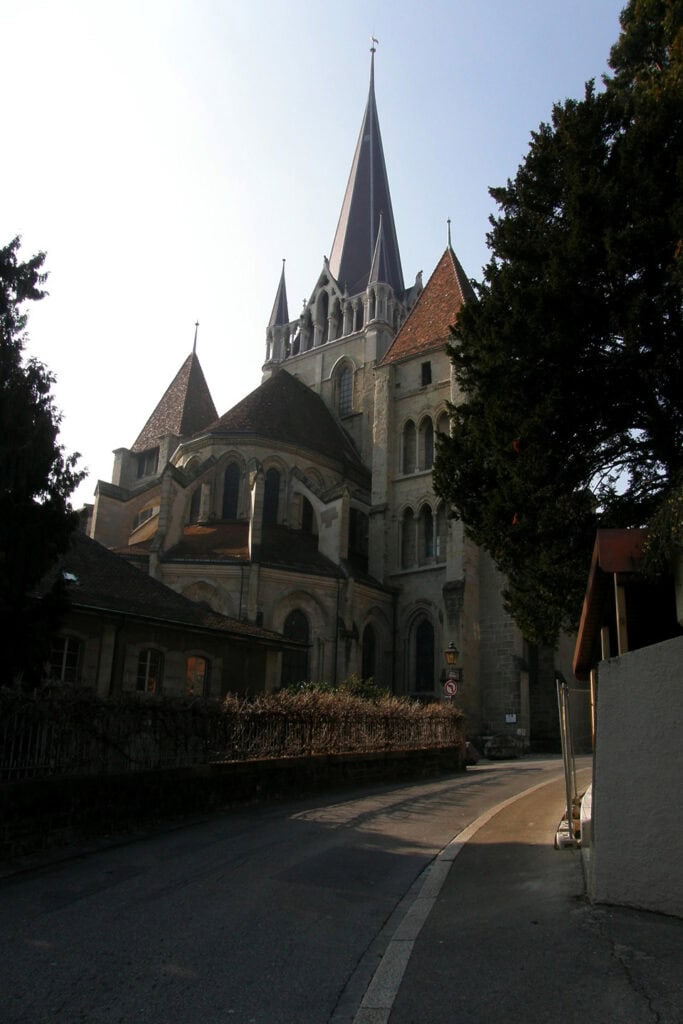
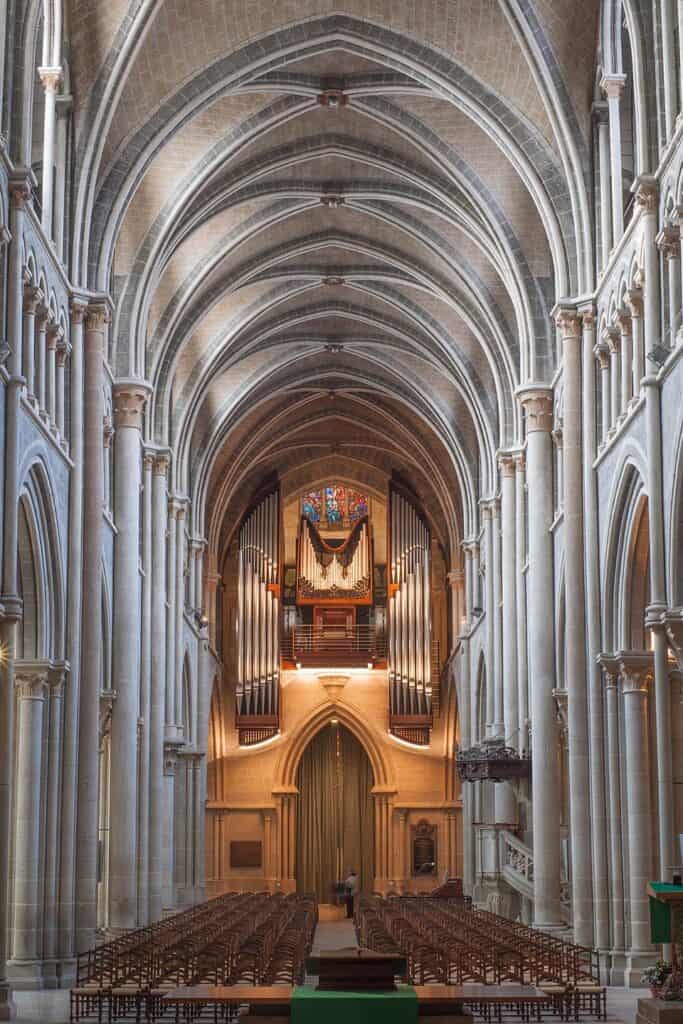
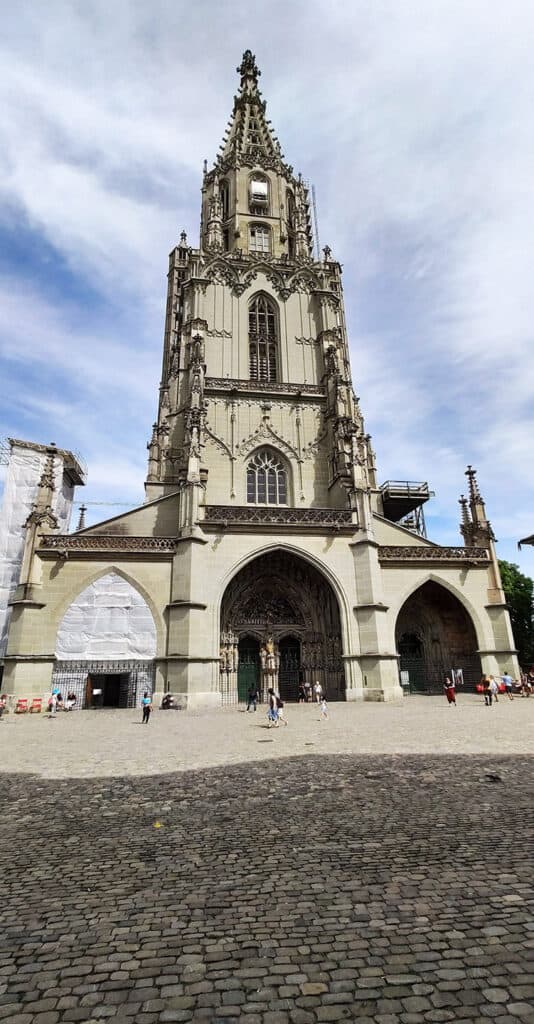

Gothic architecture in Switzerland is renowned for its towering structures and intricate details, especially in religious buildings. Key characteristics include:
- Pointed Arches: Iconic arches that direct the eye upward.
- Ribbed Vaults: Structural elements that support high ceilings and intricate patterns.
- Flying Buttresses: External supports that enable the construction of expansive windows and tall, slender walls.
Lausanne Cathedral and Bern Minster exemplify the Gothic emphasis on verticality and light. These structures create awe-inspiring and spiritually resonant interiors, contributing significantly to Switzerland’s architectural heritage.
When exploring the Types of Architectural Styles, the Gothic style stands out for its distinctive features and historical significance.
4. Romanesque Architecture

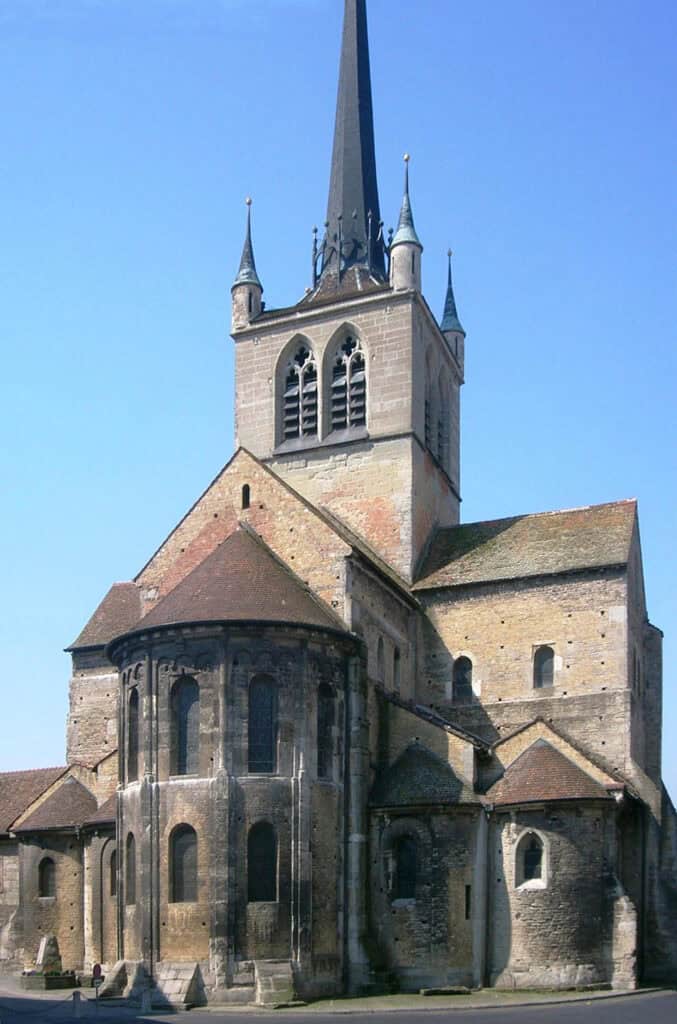
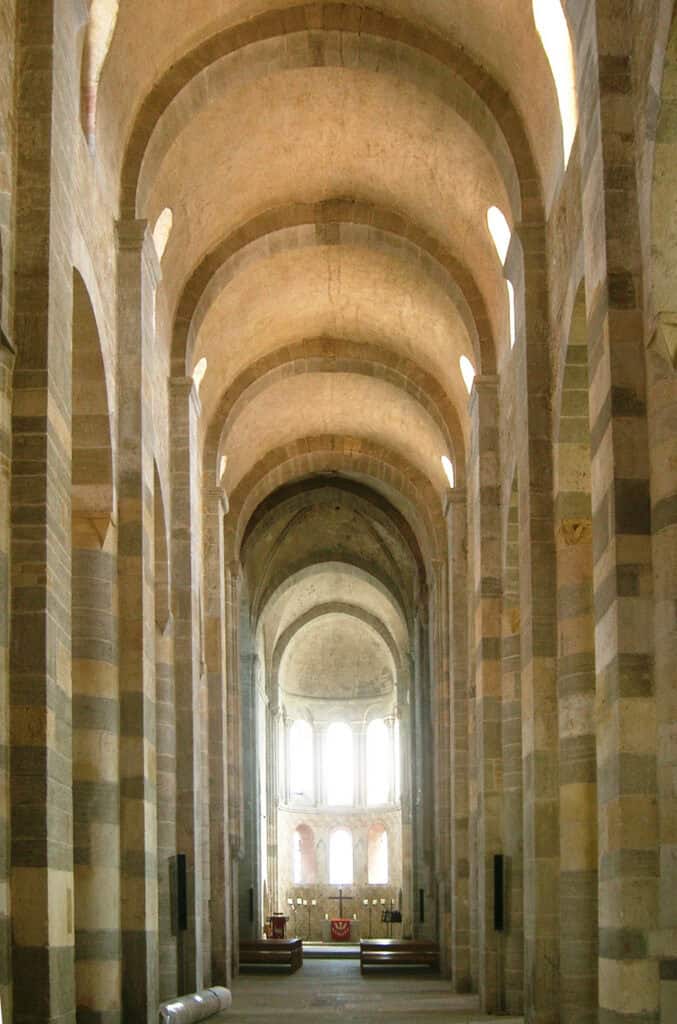
Romanesque architecture, with its solid and fortress-like appearance, is a testament to durability and strength. Exemplified by Romainmôtier Priory and Payerne Priory, this style is known for its:
- Thick Walls: Providing a sense of solidity.
- Round Arches: Semi-circular arches that characterize the style.
- Small Windows: Adding to the robust and fortress-like appearance.
These features highlight the Romanesque style’s focus on durability and strength, contributing significantly to Switzerland’s architectural heritage.
See Also Tallest Buildings in Switzerland
5. Baroque Architecture
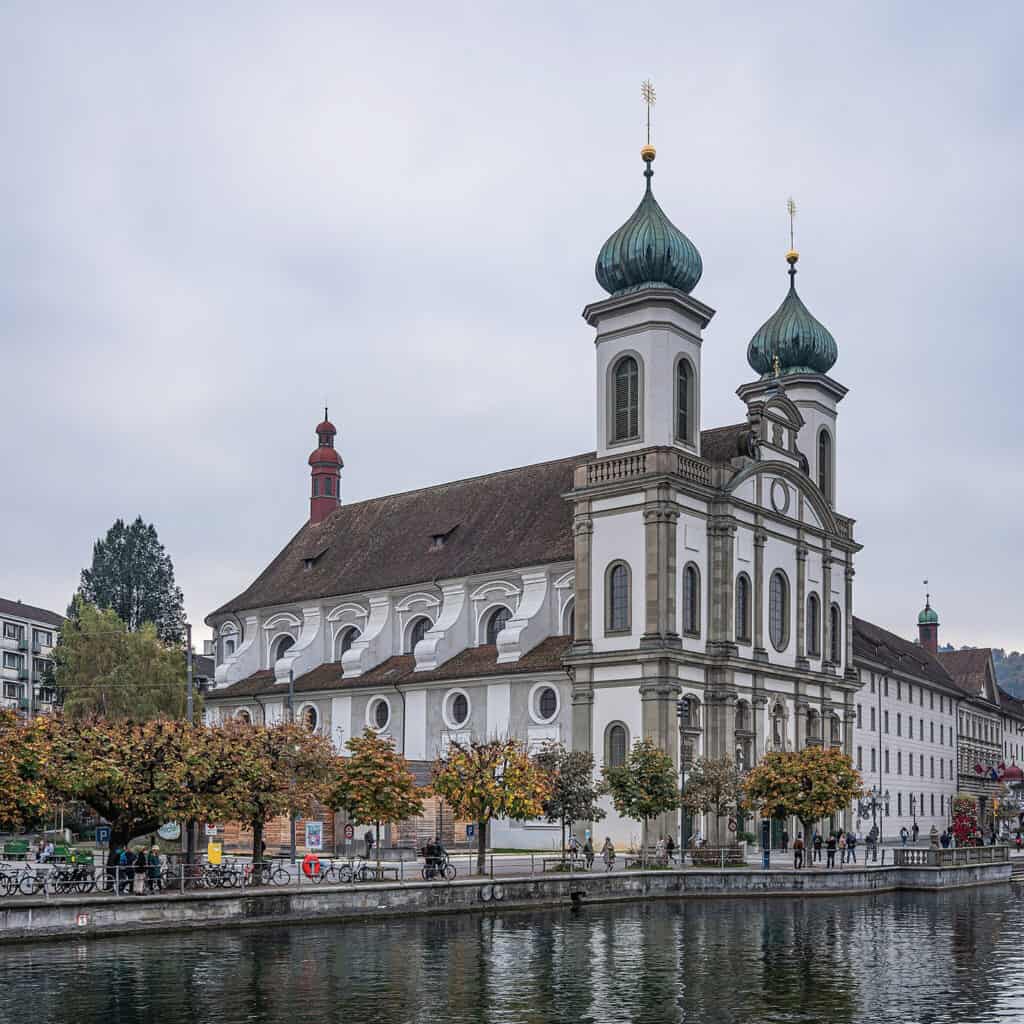
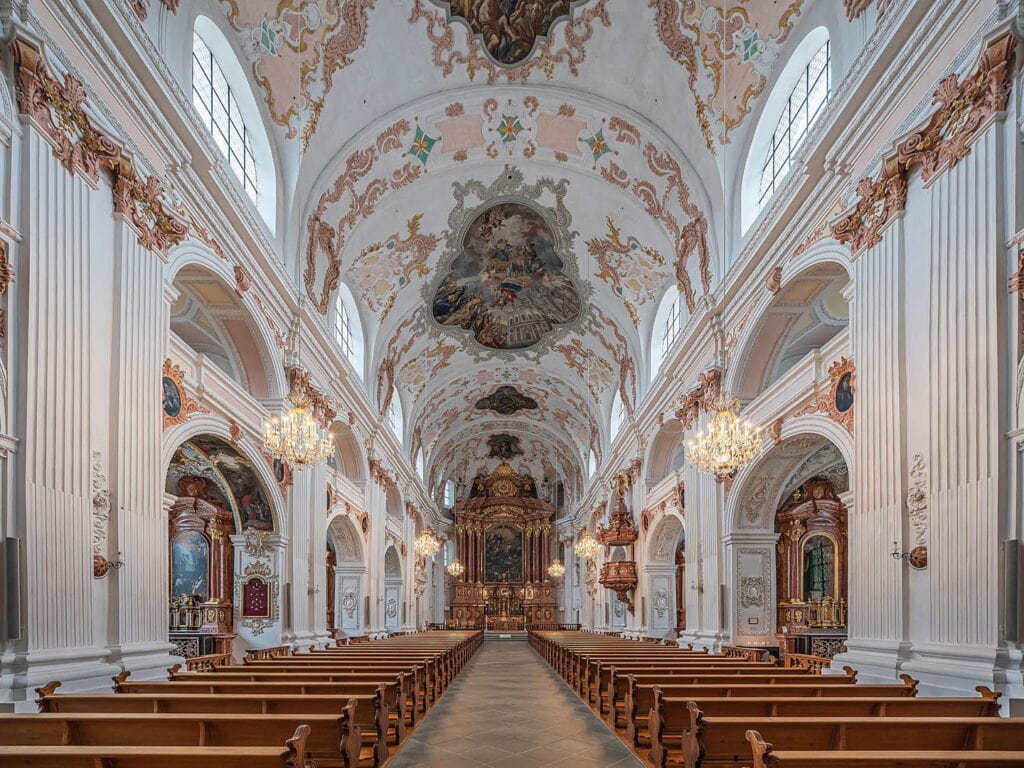
Baroque architecture is known for its ornate and grandiose designs, reflecting the opulence of the era. Key features include:
- Decorative Elements: Lavish and elaborate decorations, prominently seen in major religious centers.
- Bold Colors: Vibrant hues and intricate detailing that create a dramatic visual effect.
Notable examples in Switzerland include the Jesuit Church in Lucerne and the Abbey of St. John (Disentis Abbey). These structures showcase the opulence of Baroque design and reflect the influence of Italian and French styles on Swiss architecture.
Such elements contribute significantly to Switzerland’s rich architectural heritage and cultural diversity, complementing historical styles like Romanesque.


Materials and Techniques
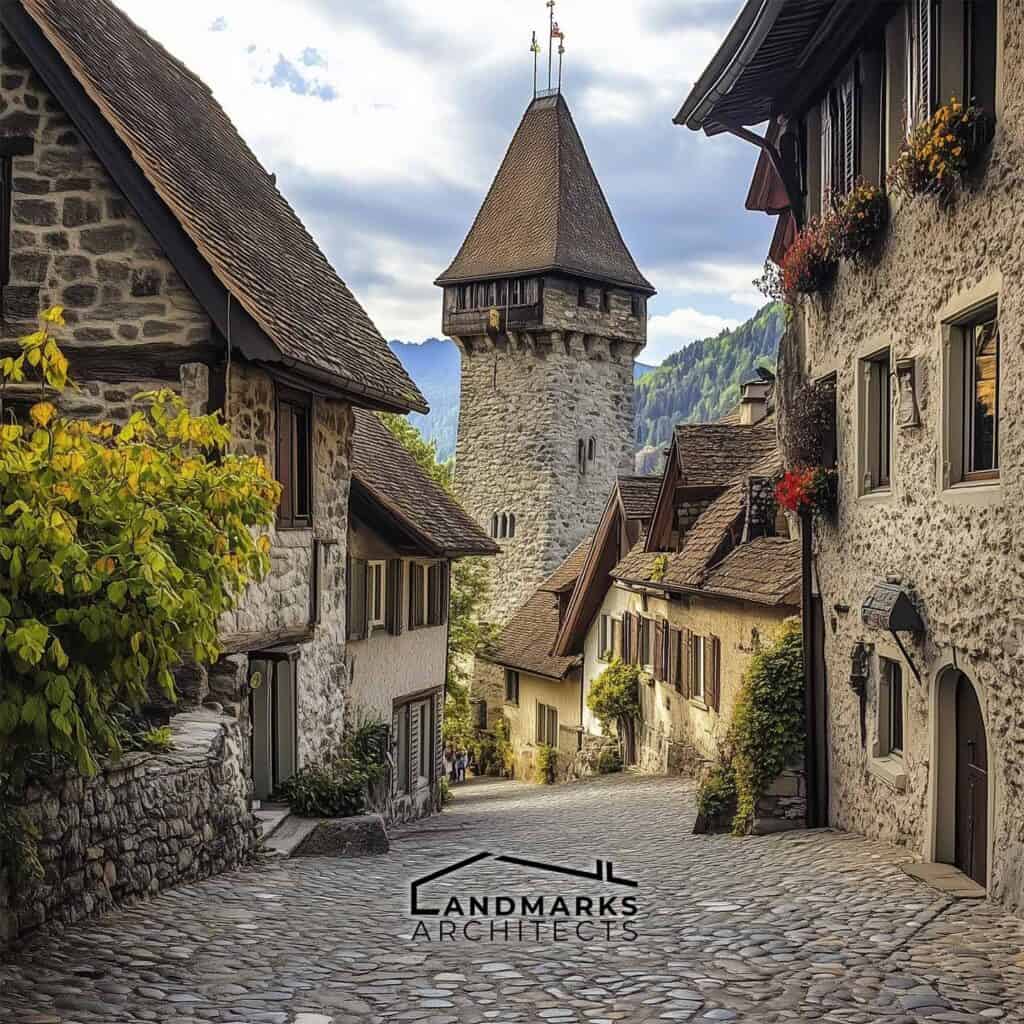

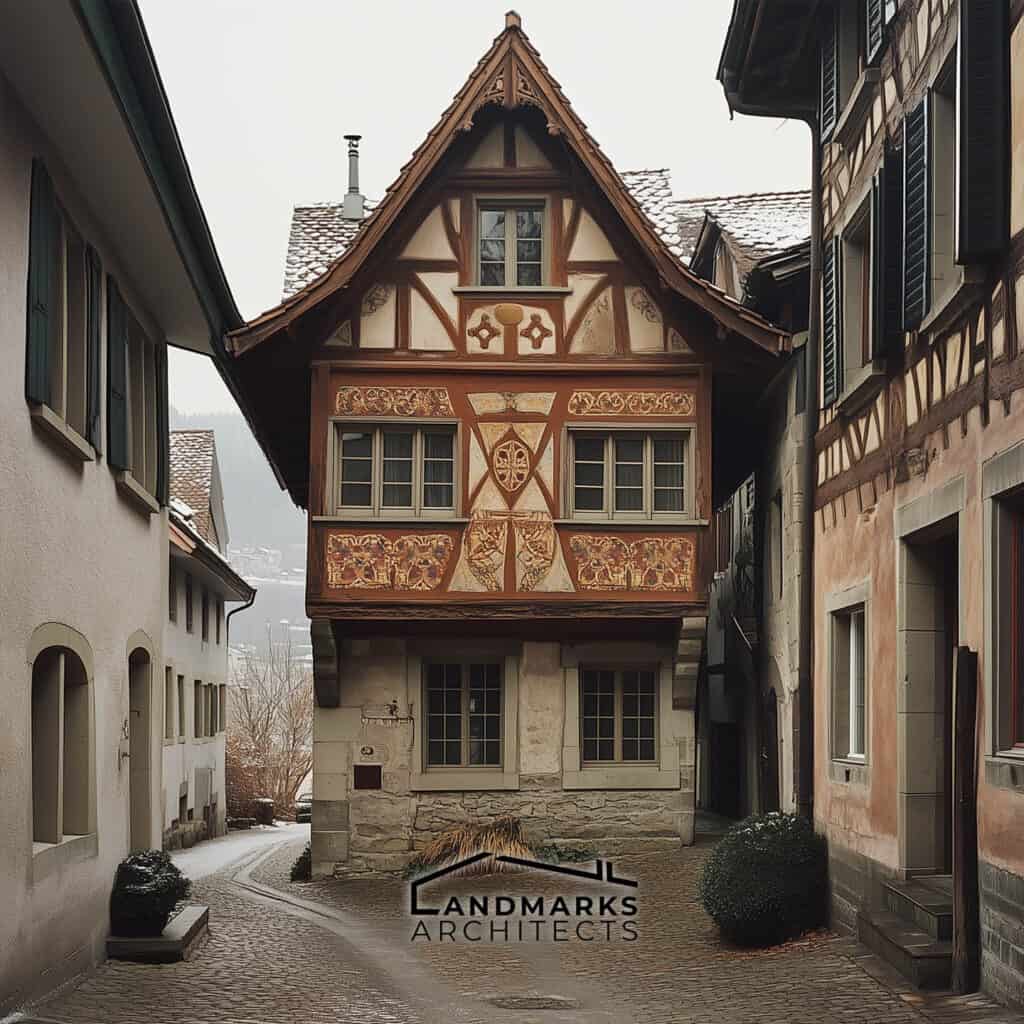
Traditional Swiss architecture utilizes a variety of materials, reflecting the country’s rich history and diverse architectural traditions. Stone, wood, and clay are predominant, showcasing local resources and historical influences.
Building Materials:
- Stone: Frequently used for historic core buildings and medieval castles, providing durability and strength.
- Wood: Essential for the construction of Swiss chalets, characterized by widely projecting roofs that protect against heavy snowfall.
- Clay: Employed in various forms, including bricks for traditional designs.
Techniques vary significantly across Switzerland. In the Alpine regions, homes are built to blend with the natural landscape, emphasizing sustainability. Historical styles like Gothic and Baroque architecture are often seen in churches and secular buildings, reflecting their grandeur and historical significance.
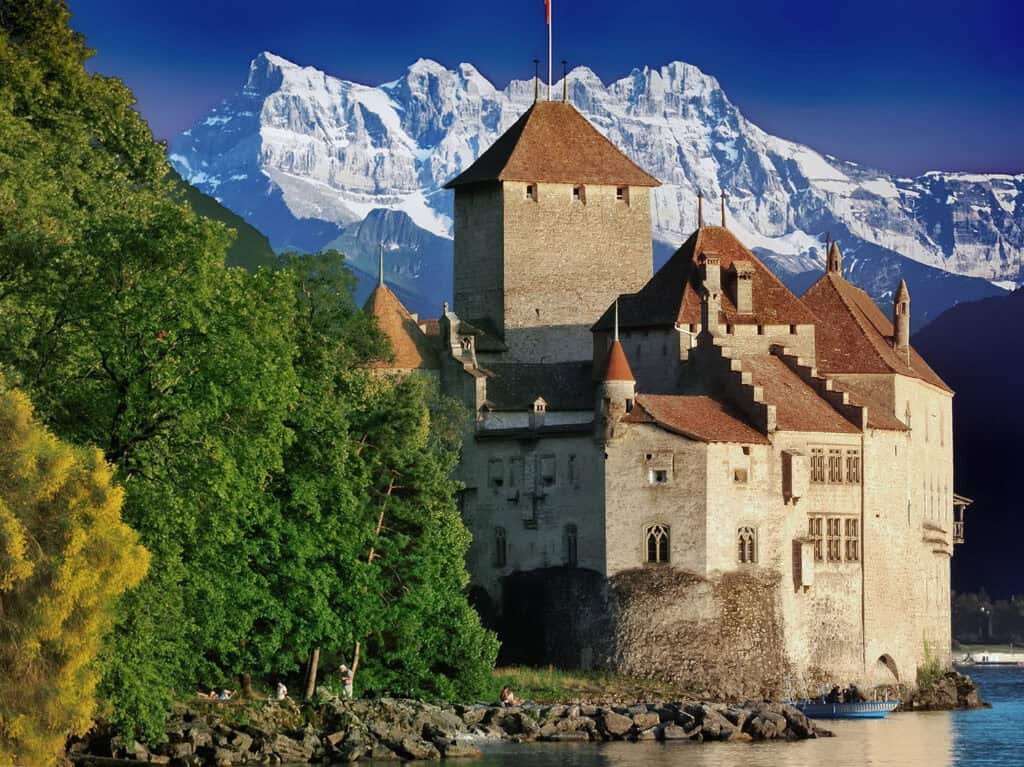
Architectural Influences: Swiss architecture reflects Italian and French influences, evident in structures like the neo-classical façade of Chillon Castle.
Switzerland’s commitment to historic preservation laws safeguards this architectural heritage, ensuring that contemporary architecture respects traditional styles.
Modern Swiss architects often draw inspiration from established designs while incorporating modern materials like reinforced concrete and innovative techniques.
See Also Famous Buildings in Germany
Cultural Influences
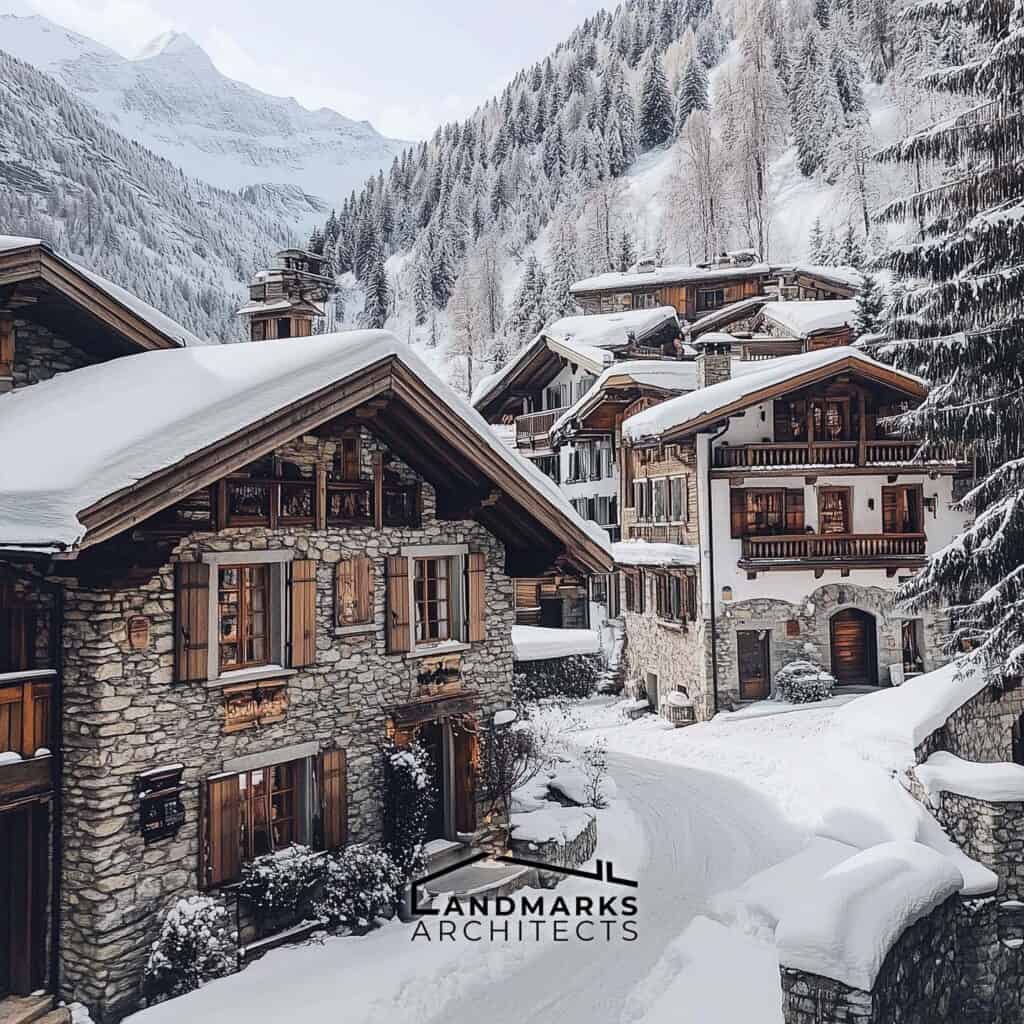
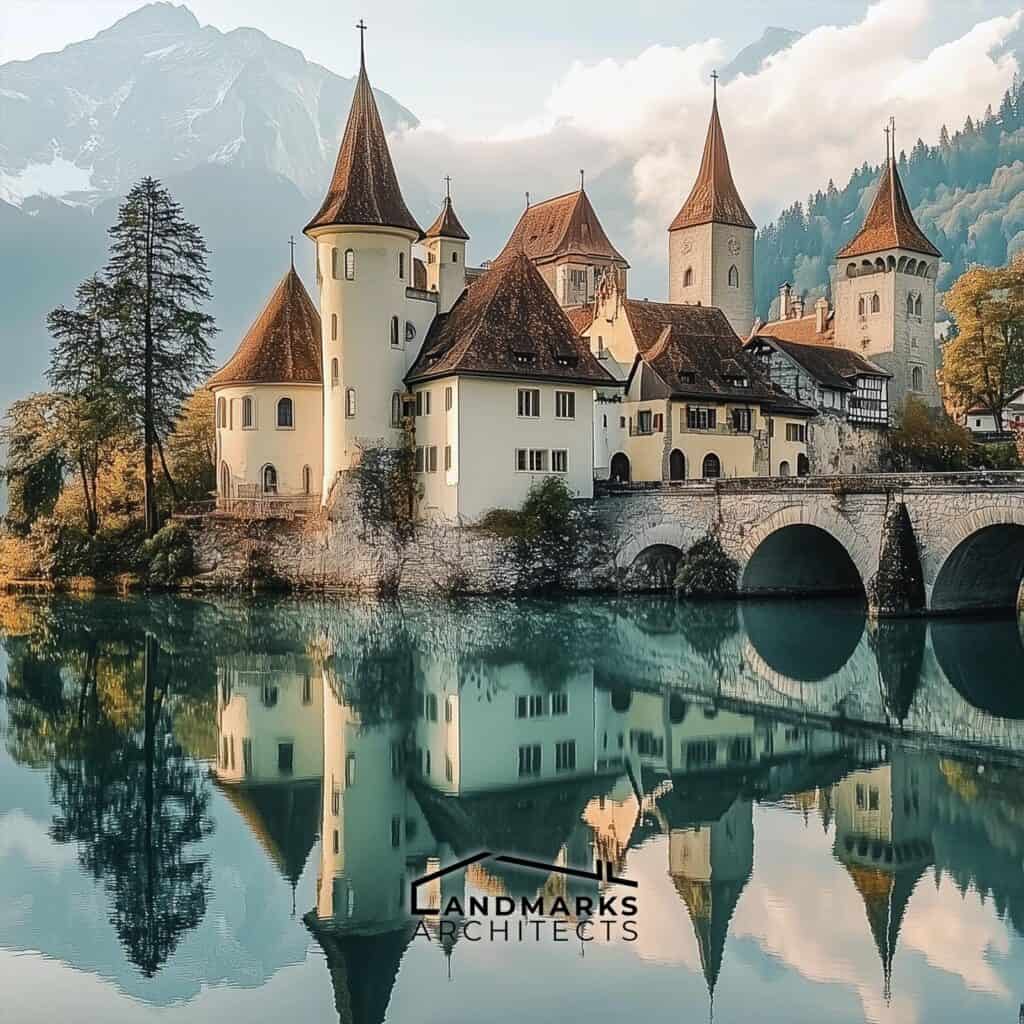
Traditional Swiss architecture reflects a rich tapestry of cultural influences shaped by its geographical location and diverse history. Key aspects include:
- The blend of Styles: Swiss architecture merges elements from Italian, French, and German styles, creating a distinctive architectural identity.
- Building Materials: Utilizes local resources such as timber, stone, and concrete. Traditional Swiss chalets are known for their widely projecting roofs designed to handle heavy mountain snow.
- Historically Significant Styles: Romanesque, Gothic, and Baroque architecture are prominent in the country’s historic core buildings. Gothic influences are evident in church construction, while medieval castles and secular buildings reflect Switzerland’s historical narrative.
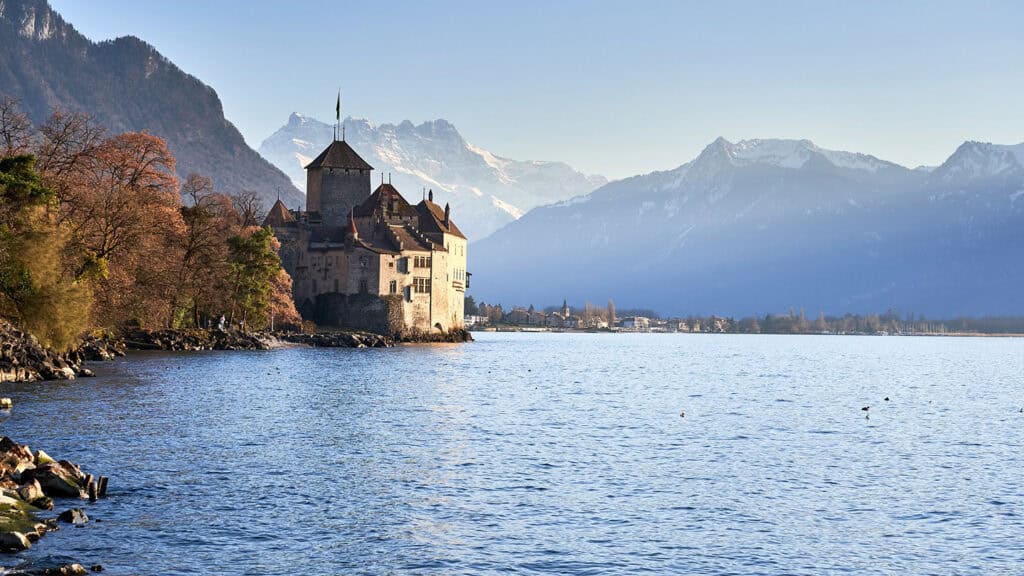

- Preservation and Modernization: Switzerland is praised for its historic preservation laws, evident in the conservation of UNESCO World Heritage Sites like Chillon Castle. Contemporary architecture is inspired by the Swiss Alps and scenic landscapes, integrating modern structures that blend harmoniously with their surroundings.
- Cultural Diversity: The influence of Switzerland’s four national languages fosters a variety of regional styles, reflecting the nation’s cultural diversity and artistic expression. This blend shapes the country’s architecture while preserving its identity in a rapidly modernizing world.
Swiss Architecture in the Modern Era
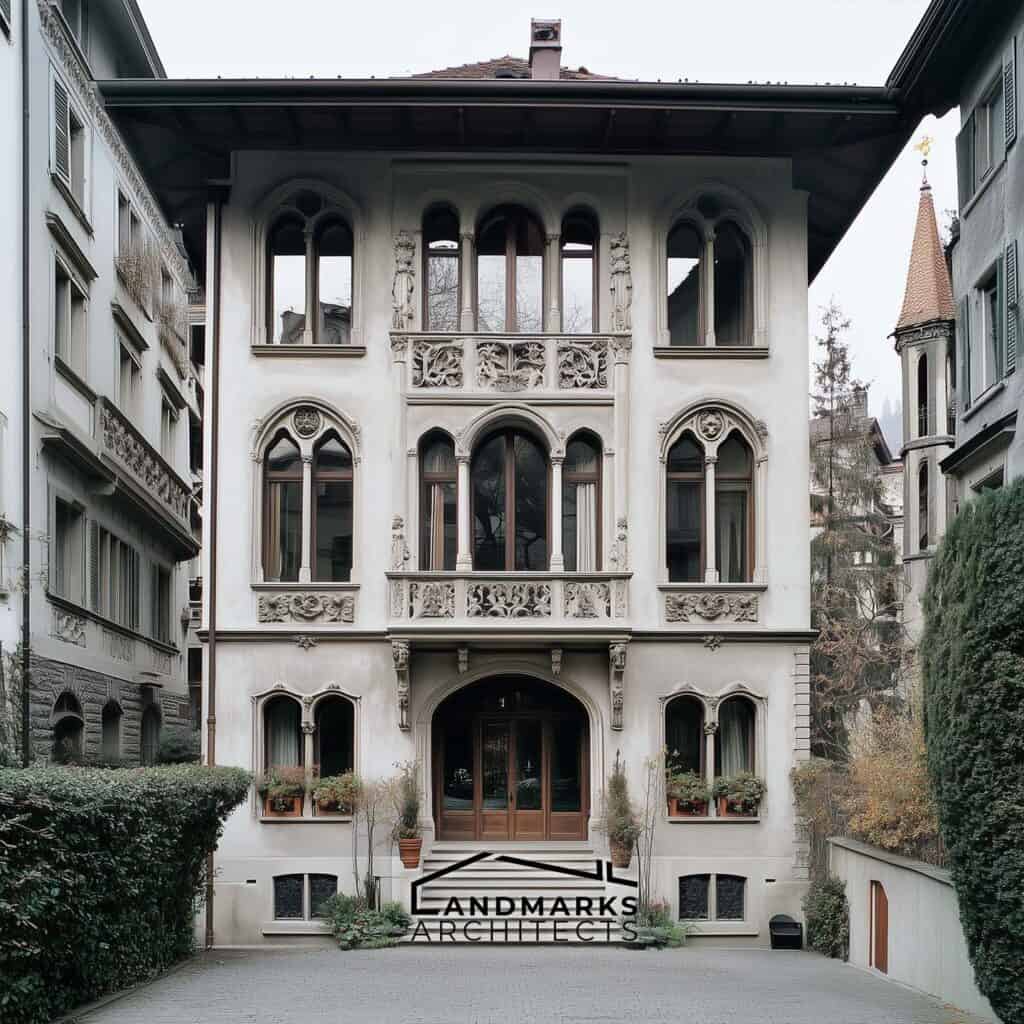
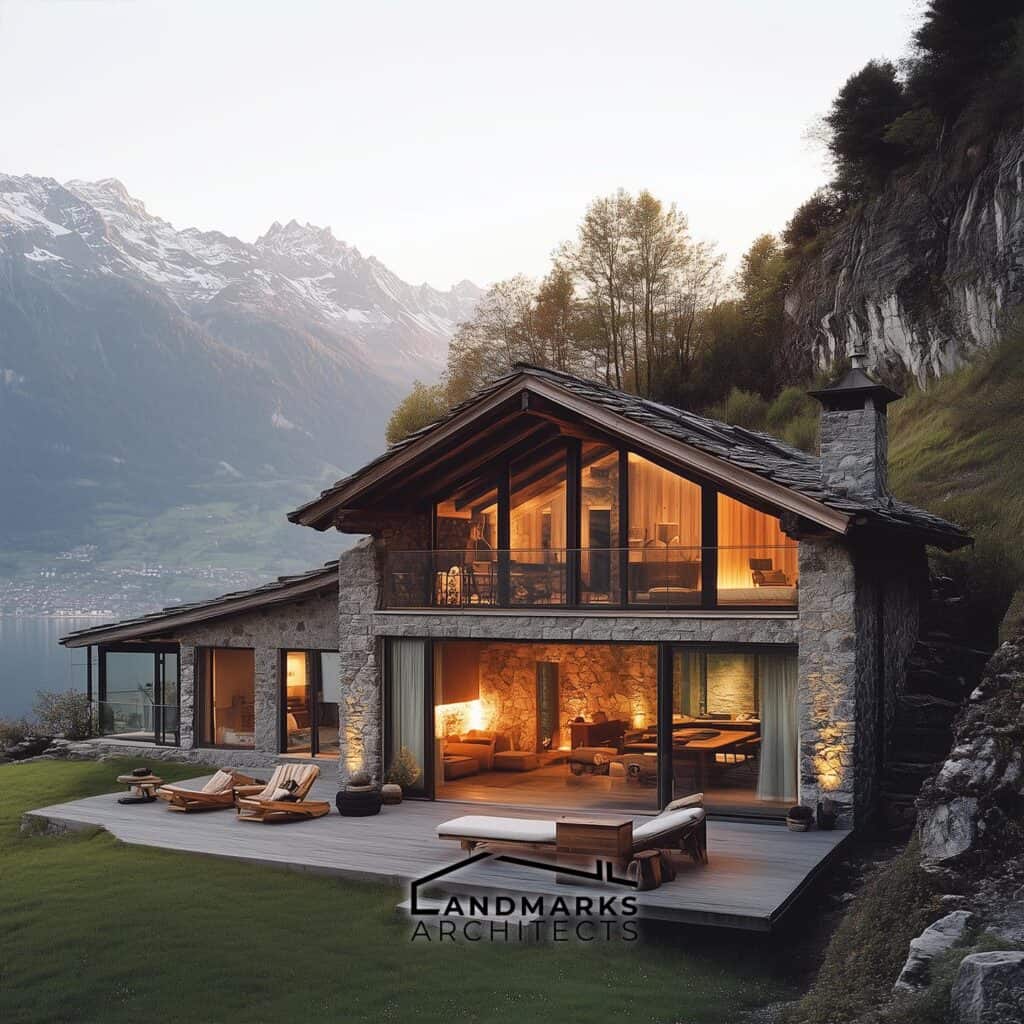
Modern Swiss architecture reflects a blend of historical influences, contemporary design and modern architectural styles. Architects draw inspiration from diverse architectural traditions, including Gothic, Baroque, and Romanesque styles.
- Contemporary Design: Modern Swiss architecture blends these historical influences with contemporary design. Architects such as Mario Botta make significant contributions, incorporating Italian and French influences seen in religious buildings and public structures.
- Natural Harmony: The use of local materials like stone and timber continues, echoing traditional Swiss chalets known for their widely projecting roofs. This combination respects cultural heritage while embracing modernity through reinforced concrete and innovative techniques.
- Swiss Alps Inspiration: The Swiss Alps provide a stunning backdrop for contemporary designs, with structures that harmonize with the natural landscape. Modernism and postmodernism coalesce, creating a unique architectural identity that remains deeply rooted in the country’s rich history.

Traditional Swiss Architecture: A Recap
Traditional Swiss architecture, from the iconic Swiss chalet style to the influences of Gothic and Baroque designs, showcases a rich blend of regional diversity, historical depth and European style architecture.
The use of local materials and adaptive designs highlights sustainability and harmony with nature. Modern Swiss architecture continues to honor this heritage while integrating contemporary innovation, creating a unique architectural identity that resonates with Switzerland’s cultural and natural landscapes.





